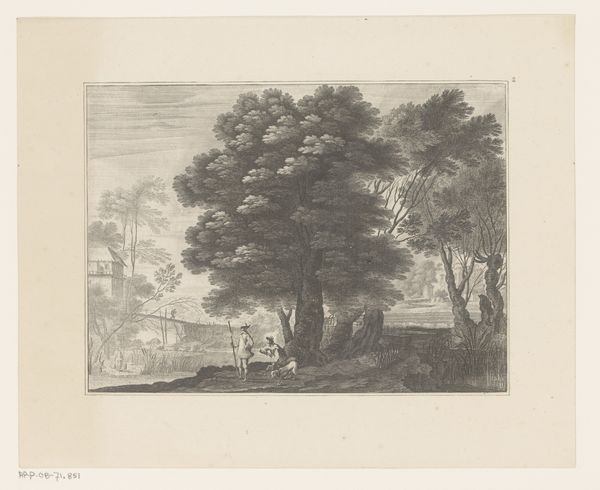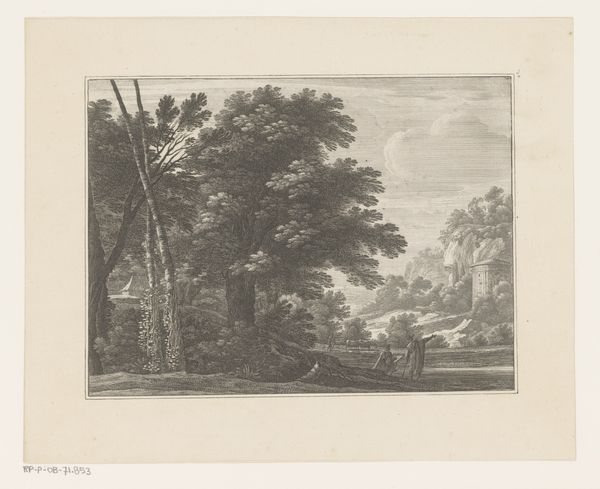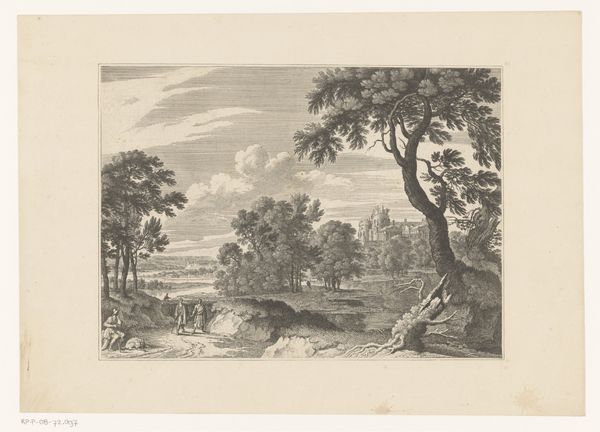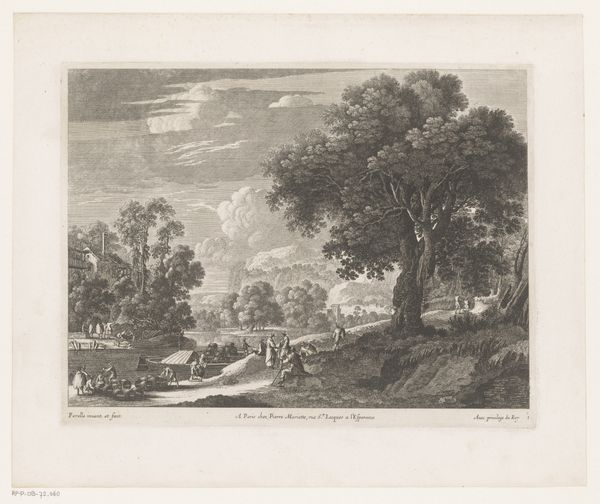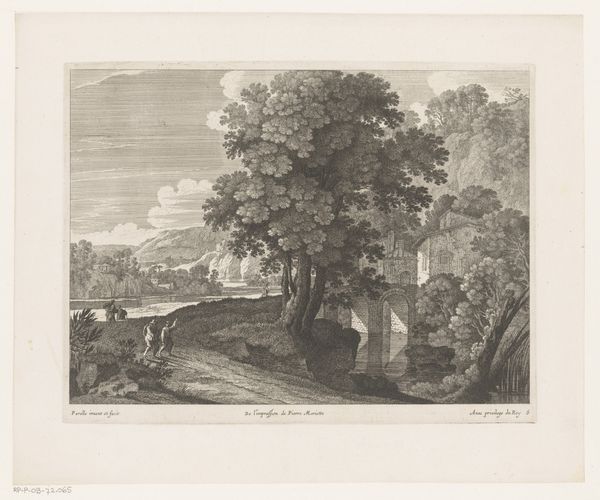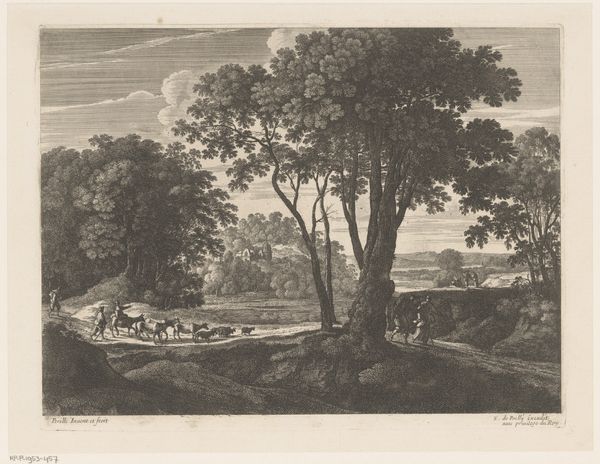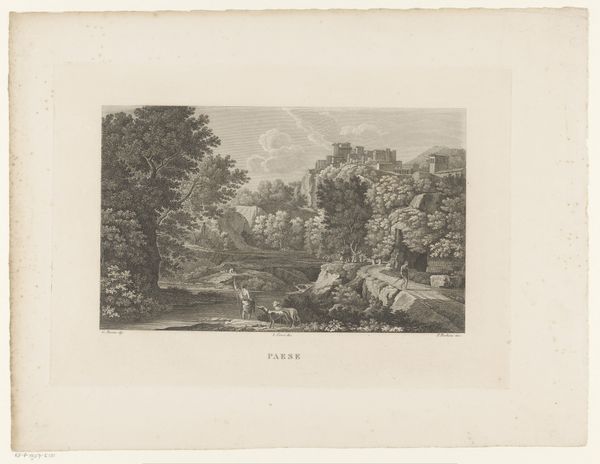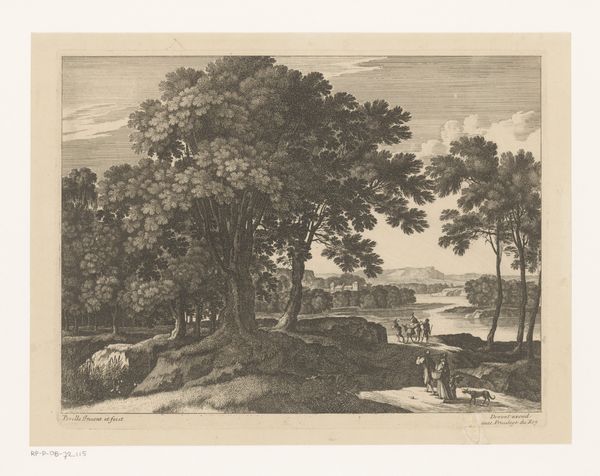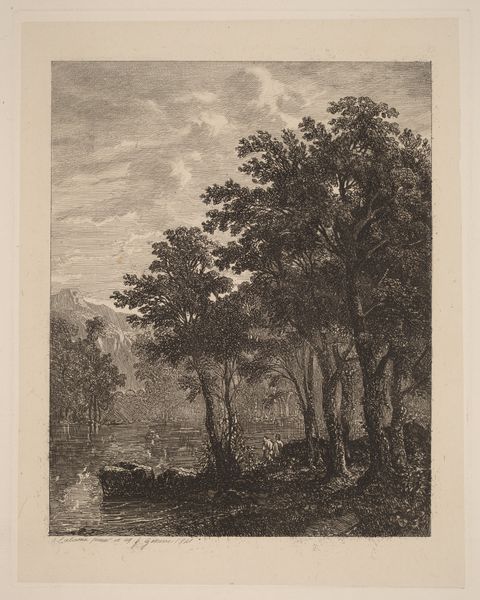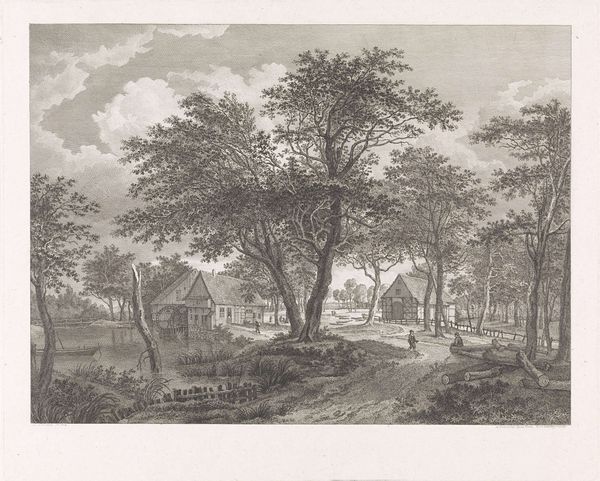
print, engraving
#
lake
#
baroque
# print
#
old engraving style
#
landscape
#
forest
#
line
#
engraving
#
realism
Dimensions: height 176 mm, width 235 mm
Copyright: Rijks Museum: Open Domain
Nicolas Perelle created this landscape with men by a lake in the Netherlands in the 17th century using etching techniques. It captures a tranquil scene, but also reflects the complex social and economic shifts of the time. During the Dutch Golden Age, there was a growing merchant class with disposable income, which created a demand for art that reflected their values and aspirations. Landscapes became popular, representing not only the beauty of the natural world, but also the expanding Dutch territory and the sense of national pride. The detailed rendering of the trees and the serene lake speak to a society that valued both the aesthetic and practical aspects of their environment. Consider the role of institutions like the art market and the emerging academies in shaping artistic production. Artists like Perelle were navigating a new landscape where their work was increasingly commodified and subject to the tastes of a broader public. This etching thus becomes a window into the cultural and economic dynamics of its time. To fully understand this work, one could delve into archival records, period writings, and economic data. The meaning of art is always contingent on its social and institutional context.
Comments
No comments
Be the first to comment and join the conversation on the ultimate creative platform.

